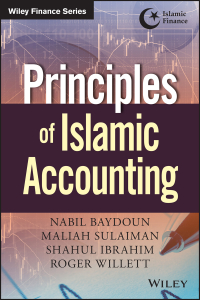Answered step by step
Verified Expert Solution
Question
1 Approved Answer
The comparative financial statements of Marshall Inc. are as follows. The market price of Marshall common stock was $82.60 on December 31, 20Y2. Marshall Inc.
-
The comparative financial statements of Marshall Inc. are as follows. The market price of Marshall common stock was $82.60 on December 31, 20Y2.
Marshall Inc. Comparative Retained Earnings Statement For the Years Ended December 31, 20Y2 and 20Y1 20Y2 20Y1 Retained earnings, January 1 $3,704,000 $3,264,000 Net income 600,000 550,000 Dividends: On preferred stock (10,000) (10,000) On common stock (100,000) (100,000) Retained earnings, December 31 $4,194,000 $3,704,000 Marshall Inc. Comparative Income Statement For the Years Ended December 31, 20Y2 and 20Y1 20Y2 20Y1 Sales $10,850,000 $10,000,000 Cost of merchandise sold 6,000,000 5,450,000 Gross profit $4,850,000 $4,550,000 Selling expenses $2,170,000 $2,000,000 Administrative expenses 1,627,500 1,500,000 Total operating expenses $3,797,500 $3,500,000 Income from operations $1,052,500 $1,050,000 Other revenue and expense: Other revenue 99,500 20,000 Other expense (interest) (132,000) (120,000) Income before income tax expense $1,020,000 $950,000 Income tax expense 420,000 400,000 Net income $600,000 $550,000 Marshall Inc. Comparative Balance Sheet December 31, 20Y2 and 20Y1 20Y2 20Y1 Assets Current assets: Cash $1,050,000 $ 950,000 Marketable securities 301,000 420,000 Accounts receivable (net) 585,000 500,000 Inventories 420,000 380,000 Prepaid expenses 108,000 20,000 Total current assets $2,464,000 $2,270,000 Long-term investments 800,000 800,000 Property, plant, and equipment (net) 5,760,000 5,184,000 Total assets $9,024,000 $8,254,000 Liabilities Current liabilities $880,000 $800,000 Long-term liabilities: Mortgage note payable, 6% $200,000 $0 Bonds payable, 4% 3,000,000 $3,000,000 Total long-term liabilities $3,200,000 $3,000,000 Total liabilities $4,080,000 $3,800,000 Stockholders' Equity Preferred 4% stock, $5 par $250,000 $250,000 Common stock, $5 par 500,000 500,000 Retained earnings 4,194,000 3,704,000 Total stockholders' equity $4,944,000 $4,454,000 Total liabilities and stockholders' equity $9,024,000 $8,254,000 Required:
Determine the following measures for 20Y2, rounding to one decimal place, except dollar amounts which should be rounded to the nearest cent. Use the rounded answer of the requirement for subsequent requirement, if required. Assume 365 days a year.
1. Working capital $fill in the blank 1 2. Current ratio fill in the blank 2 3. Quick ratio fill in the blank 3 4. Accounts receivable turnover fill in the blank 4 5. Number of days' sales in receivables fill in the blank 5days 6. Inventory turnover fill in the blank 6 7. Number of days' sales in inventory fill in the blank 7days 8. Ratio of fixed assets to long-term liabilities fill in the blank 8 9. Ratio of liabilities to stockholders' equity fill in the blank 9 10. Times interest earned fill in the blank 10 11. Asset turnover fill in the blank 11 12. Return on total assets fill in the blank 12% 13. Return on stockholders equity fill in the blank 13% 14. Return on common stockholders equity fill in the blank 14% 15. Earnings per share on common stock $fill in the blank 15 16. Price-earnings ratio fill in the blank 16 17. Dividends per share of common stock $fill in the blank 17 18. Dividend yield fill in the blank 18%
Step by Step Solution
There are 3 Steps involved in it
Step: 1

Get Instant Access to Expert-Tailored Solutions
See step-by-step solutions with expert insights and AI powered tools for academic success
Step: 2

Step: 3

Ace Your Homework with AI
Get the answers you need in no time with our AI-driven, step-by-step assistance
Get Started


